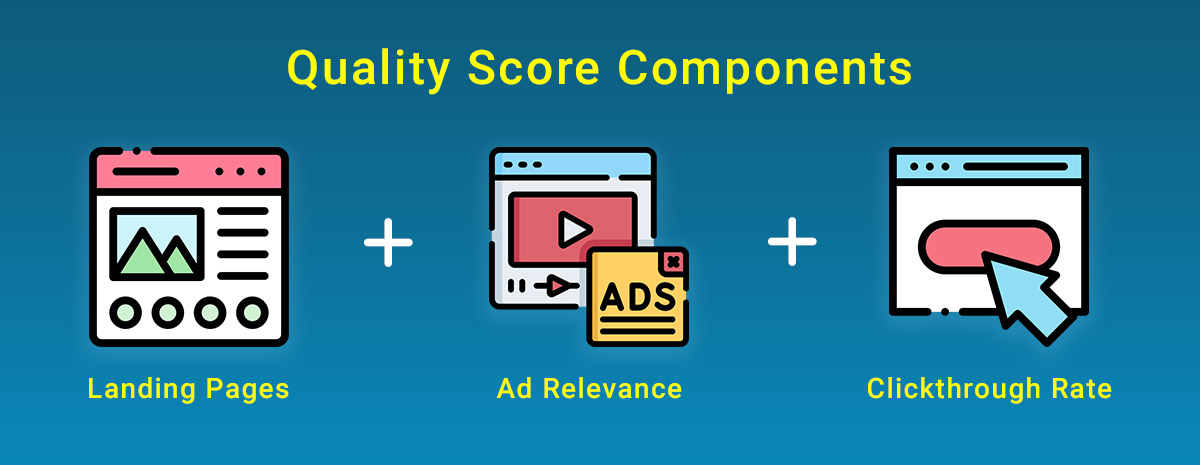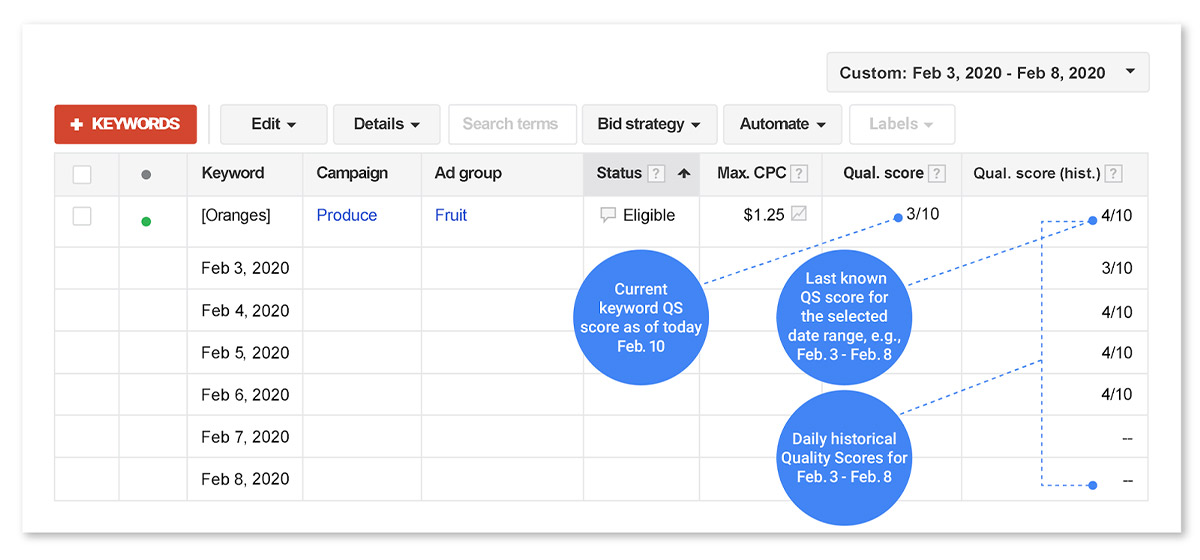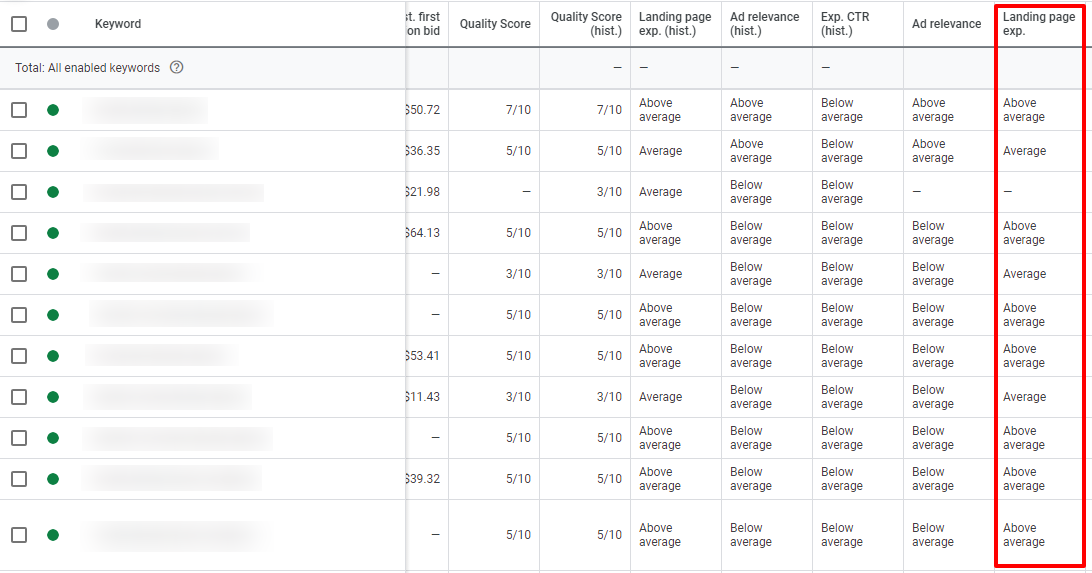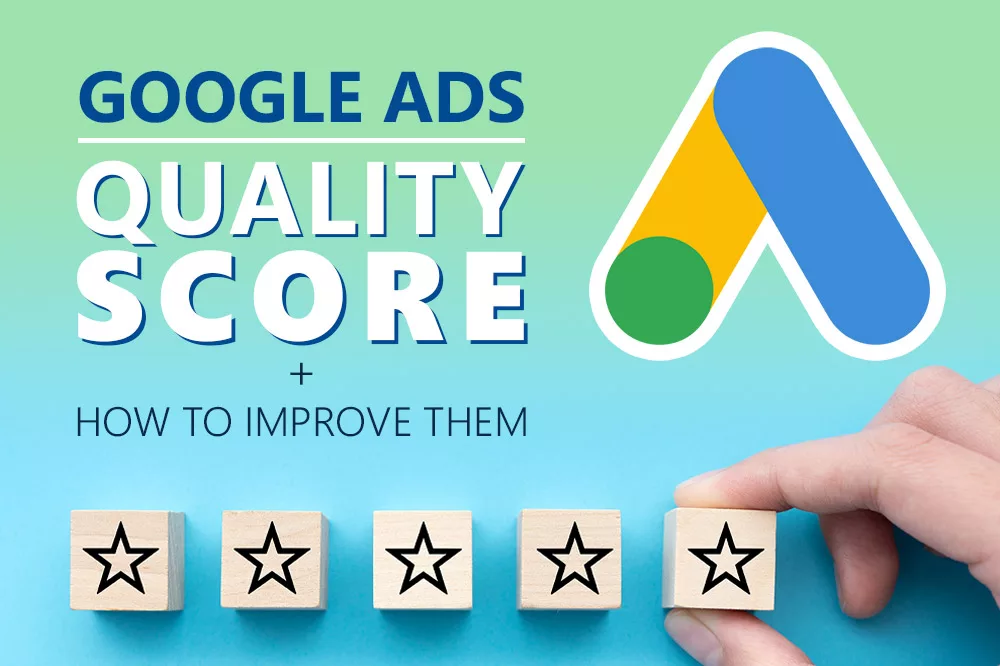90% of internet users worldwide rely on the Google Display Network, which has over 200 million sites. Access to this network will increase viewership, which can convert to increased revenue.
So how do you increase your site ranking?
Your Google Ad Quality Score (QS) can help.
An outstanding Google Ads Quality Score affects your overall rank, visibility, and (most significantly) your profitability. Using paid search ads is a great way to improve your presence online and create brand awareness, but it also requires a constant understanding of what works, knowledge of what does not, and applying the proper consistency to your advertising efforts.
Despite the belief that bigger ad agencies with bigger budgets can buy their way onto Google’s first page, that is not the case. Poor ad placement, ineffective landing pages, and low-scoring keywords can still topple the giants.
Here are a few guidelines you can apply to ensure a high Quality Score for your ad campaigns while reducing your budget and streamlining your ad relevance.
What Is a Quality Score?
Google Ads uses a measurement called a Quality Score to estimate your campaign success rate. This quality score is calculated using three different factors:

- Landing pages – website pages used specifically for capturing specific audiences or customers
- Ad relevance – Online advertisements on websites, social media platforms, or Google Search that relate to your brand
- Clickthrough rate (CTR) – the number of viewers of your ads (impressions) compared to the number of people clicking the ads (clicks).
Your Google Quality Score affects your ranking – “below average,” “average,” or “above average.” Analyzing how your ads perform online using these factors unlocks how you can improve your QS.
A high Google Ads Quality Score significantly lowers your expected click-through rate (CTR) and cost-per-click (CPC), conserves your budget, and improves the quality of your search results.
Quality Score equates to the ad relevance of your brand during online searches. However, to be successful at improving your QS, you should be aware of the different types and how their Quality Score impacts your bottom line.
Quality Score Types (and Ways to Improve Them)
Ad Group Quality Score
This Quality Score column provides insight into your ad rank and what you need to work on within a campaign. If an ad group averages low, but your overall campaign is high, zero in on the issue and improve your overall quality scores.
Consider realigning your campaigns and ad groups by doing the following:
- Ensure that your ad text has the same keyword composition as your ad group.
- Boost your ad group Quality Score by modifying low-performing ads to increase your expected CTR ad relevance
- Restructure your ad groups to enhance your account structure. Tailor them so each has the best keywords to improve your Quality Score and your numbers.
Account-Level Quality Score
Google Ads uses a Quality Score formula to analyze your keyword and ad performances overall.
An excessive number of low QS keywords and low click-through rate (CTR) ads will lower your account’s total Quality Score.
Google also favors accounts with longevity. Your ad rank will have more clout than a company that is starting out if your account has consistently high performance levels and an extensive campaign history. Please note: With poor-performing accounts, it can take months to improve your Google Quality Score, but be patient and don’t alter your keyword research too drastically.
Keyword-Level Quality Score
Your Google Ads account uses this Quality Score as a metric for success based on a 1-10 scale (10 being the best), using search queries matching your exact keywords.

Google analyzes the historical data of your keyword Quality Score and its impressions once it reaches a specific number (known as the impression threshold) and analyzes its performance. The better your keyword-level Quality Score, the lower your cost and the higher your chances that you will reach that impression threshold faster.
Bidding for higher positions or ad budget increases are two Quality Score factors you can improve upon for better results.
Landing Page Quality Score
Your landing page QS is a key performance indicator for your Google Ads score if done correctly.

Your page needs to provide relevant and helpful information about your ideal client, and Google Ads rewards that by placing landing pages higher on their ranking system.
Your customer’s landing page experience directly impacts your keyword’s Quality Score.
Mobile Quality Score
For Google, calculating Quality Scores is the same across platforms, yet mobile and desktop ads have different results. Separating laptops from mobile in combined campaigns (i.e., one that reaches across platforms such as tablets, mobile phones, and laptops) can help to increase or decrease your QS, but the overall campaign stays the same.
Also note: Your Google Ads account also factors in the distance between the user and business location, so proximity also plays a significant factor regarding ad position, Adwords Quality Score, and calculating Quality Score.
Additional Ways To Increase Your Google Ads Quality Score
Rely on and expand your keyword research.
Broad match keywords (i.e., words that reach a wider audience), keyword-targeted ads (i.e., ads based on age, group, or interest), and a high keyword Quality Score can enhance your expected clickthrough rate, improve the landing page experience, and drive site traffic.
- Use keywords and engaging copy with a high click-through rate and organize them into unique groups for each campaign.
- Find the best and broadest scope of ad text to obtain a higher ad rank on Google Ads without going too niche.
- For ads with a low clickthrough rate (i.e., less than 1.5%), consider repurposing and rewriting them with higher rankings.
Dynamic keyword insertion (DKI) is another method to apply. DKI automatically updates your ad copy to include closely related keywords that match the end-user’s search terms, saving you time and effort. The keyword is automatically inserted into the ad group to enhance keyword quality scores.
For example, if you’re an ice cream parlor that also specializes in frozen yogurt, you can set up Google DKI in one ad group to find users searching for “froyo” or “frozen yogurt” and direct them accordingly.
You can easily attract and target users to find your business while increasing your visibility even when you have a low ad ranking if you use it smartly. However, you should also use it with caution: While it can increase your CTR, DKI can also lead to advertising errors (and possible legal action). Using “Alecan Marketing Solutions” is a viable keyword option for our company, but if you’re applying “Marketing Solutions” alone as a keyword, you can end up supporting the competition!
Mind your Google Ads account
Google Ad extensions increase the possibility that your targeted ads will be seen on search engine results pages (SERPs), boosting the power of your Google search network, expected CTR, and display network Quality Score.
Avoid negative keywords in your ad copy (i.e., low-Quality-Score keywords that can consume and waste your budget) as well. Google Ads campaigns allow you to specify various terms you don’t want in your campaigns in addition to ones that you do.
For example, suppose you are an “executive coach” looking to attract C-Suite level clients. In that case, you may want to avoid including “life coach,” a completely different field, in your terms since it could negatively impact your keyword’s Quality Score.
Be aware of keyword match type in your Google Ads accounts, as it determines how closely your keywords compare to end-user search terms during an ad auction.
Pay attention to Google Ad Quality Score landing page data
Many factors on your landing page are essential for a high Quality Score: cross-platform compatibility (mobile, laptop, and tablet), landing page load speed, and a satisfactory user experience. Determine if your users are finding the landing page information useful.
If not, work to maintain the connection between your landing page and ad groups. Exact match keywords from your ads to your landing page (such as using the same header in your ad as the header of your landing page) will boost your ad rank and favor highly on your Google Ad rank formula.
The customer landing page experience should be minimal, with easy-to-follow copy personalized to your target audience and focusing on the promises your ad offered to get users to take action.
Additionally, to boost your mobile ad Quality Score, enhance your customer landing page experience, and make your content more ad relevant, consider:
- Using smartphone-friendly pages
- Optimizing your ads
- Creating responsive pages for mobile to target specific users
- Reducing image sizes and text for a lower bounce rate
The equation is simple: Higher-ranking landing pages + more visitors = more customers and ROI.
Want more ways to improve Quality Score?
A good Quality Score with Google Ads requires extensive patience, research, and a budget-minded mentality—a challenge, but one at which you can definitely succeed.Check out how much to spend on Google Ads and reach out to our team at Alecan Marketing Solutions for results-oriented ad strategies that will bring you quality leads and rankings.



